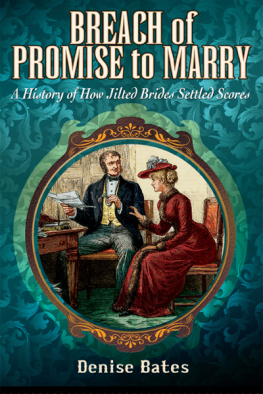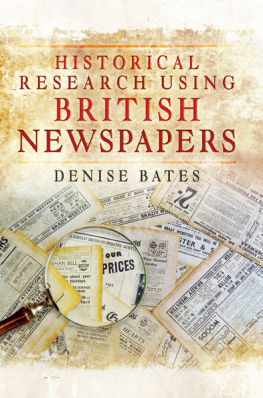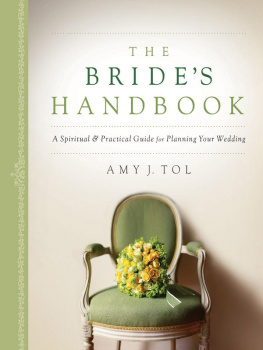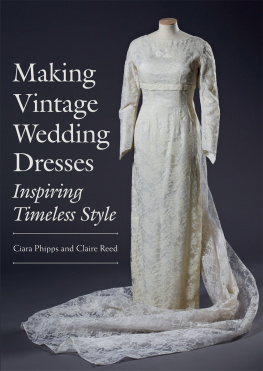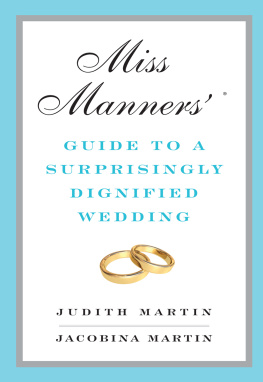

First published in 2014 by

an imprint of
Pen & Sword Books Ltd
47 Church Street
Barnsley
South Yorkshire
S70 2AS
The right of Denise Bates to be identified as author of this work has been asserted by her in accordance with the Copyright, Designs and Patents Act 1988.
Copyright Denise Bates, 2014
ISBN:- 9781783030361
eISBN:- 9781473831889
A CIP catalogue record for this book is available from the British Library. All rights reserved. No part of this book may be reproduced or transmitted in any form or by any means, electronic or mechanical including photocopying, recording or by any information storage and retrieval system, without permission from the Publisher in writing.
Printed and bound in the UK by CPI Group (UK) Ltd, Croydon, CRO 4YY
Pen & Sword Books Ltd incorporates the imprints of Pen & Sword Archaeology, Atlas, Aviation, Battleground, Discovery, Family History, History, Maritime, Military, Naval, Politics, Railways, Select, Social History, Transport, True Crime, and Claymore Press, Frontline Books, Leo Cooper, Praetorian Press, Remember When, Seaforth Publishing and Wharncliffe.
For a complete list of Pen & Sword titles please contact
PEN & SWORD BOOKS LIMITED
47 Church Street, Barnsley, South Yorkshire, S70 2AS, England
E-mail: enquiries@pen-and-sword.co.uk
Website: www.pen-and-sword.co.uk
Remembering
Colin Marshall, Kathleen Wordsworth (ne Marshall)
and Frank Wordsworth,
my lovely aunty and two wonderful uncles
Introduction
A large proportion of breach of promise cases are by women manifestly wanting money from men whom they cannot possibly want as husbands.
( The Times , 15 February 1878)
Breach of promise of marriage was an unusual law allowing a jilted person to obtain damages from an intended husband or wife who had then refused to marry them. It developed in the last decades of the eighteenth century, enjoyed its heyday during Queen Victorias reign, and gradually became an anachronism in the twentieth century as the social assumptions upon which it was based changed for ever. Few tears were shed when the claim was finally abolished in 1970.
Less than 50 years later, the social and cultural phenomenon that was breach of promise has almost disappeared from view, intruding only occasionally in a handful of nineteenth century novels and theatrical works which have stood the test of time. Yet Dickenss tragic, melodramatic Miss Havisham, his comical, nave Mr Pickwick, the grasping, amoral Angelina in Gilbert and Sullivans Trial by Jury and Vesta Victorias music-hall song about a jilted woman left waiting at the church are unrepresentative portraits of the social influence of breach of promise.
As I began to look at the real plaintiffs and defendants in breach of promise cases, how a claim could change lives for better or worse and why cross-class romances were frowned on in Victorian society, I stumbled upon a claim which reveals timeless aspects of human nature, such as greed, selfishness, revenge and immaturity. Virtuous maidens, unmarried mothers, embittered spinsters and career fraudsters jostle alongside no-win-no-fee lawyers, love-em-and-leave-em seducers, nave young men and ageing Lotharios in a canvas that seems more like a Hogarth caricature sprung to life than a lovelorn lady nursing a broken heart.
Breach of promise was predominantly a womans action. Men were entitled to bring claims but rarely did so, as the law adopted very different standards when judging their claims and never awarded the large sums of money that women were able to obtain. To reflect this, throughout the book I have used pronouns which represent a woman bringing a breach of promise claim and a man defending it. The few claims brought by men against women are covered in their own chapter.
This study of breach of promise between 1780 and 1970 focusses on the social history of the claim rather than its legal development and I have consciously simplified discussion of the law and legal structures. The cases included here have been chosen for the social aspects they represent. In selecting examples I have endeavoured to illustrate the wider picture and when using cases that seem unique I have indicated this. I have also been very sparing in the use of examples after 1930, as by that time the claim was becoming relatively unusual. People who have been involved in breach of promise claims are still alive and I have no wish cause any hurt or distress.
Some of my source material has been drawn from contemporary newspapers, which provide fascinating insights but can also be tantalisingly brief. Full names, ages, occupations and places of residence for plaintiff and defendant are often not available. Lack of detail also makes it very hard to discover what happened to many women after their breach of promise hearing, and in some cases there is no way of knowing whether a name in the records relates to the plaintiff. In this respect women with more unusual names are an asset.
I entered details of the breach of promise claims into a database. The statistics included in this study are drawn from that information. For those with an interest in this side of my work, further analysis is provided in .
In the year spent researching and writing this book I have enjoyed support and practical assistance from a number of people, some of whom are unknown to me. Thanks are expressed to anyone who has been involved in digitising material for use on-line. To have located the range of information I have discovered from microfilm would have been impossible and I feel this study is an example of how the easier searchability of source material will, in the coming years, lead to a deeper understanding of some hidden aspects of history.
My editor, Jen Newby, displayed immediate enthusiasm when I first mentioned breach of promise and encouraged me to develop an editorial proposal whilst I was still considering whether the topic would yield sufficient material to sustain a book. She has since been a fount of wisdom and constructive challenge as my research led me away from what we initially thought the book would be about and into new and unexpected discoveries.
I would also like to thank Rachel Anchor, Mark Stevens, and Broadmoor Hospital, who have all provided assistance with individual queries. The staff of the Local Studies Library in Ashton-under-Lyne have offered practical support and shown a genuine interest in the research undertaken in the library. The marriage of Mary Elizabeth Smith was uncovered by Saskia Lettmaier as part of her own research.
My immediate family has been a constant source of support and encouragement and I cannot allow the on-going interest of my husband, sons, daughter-in-law, mother and mother-in-law to pass unnoticed. I am grateful for their tolerance of my time and our conversations being overtaken by numbers of people from literature and history, for assistance with all the aspects of computers and information technology which elude me and for help in sourcing the illustrations used in the book. Other than where credited, illustrations are believed to be out of copyright. Should this not be the case, I will endeavour to correct future editions.
Breach of promise has proved a fascinating study of a legal claim which, like ivy, entwined itself in many aspects of nineteenth century society. Very unusually it is an example of a law where women were more equal than men. To discover how women reacted when they had the whip-hand has been the most unexpected part of the journey.
Next page
